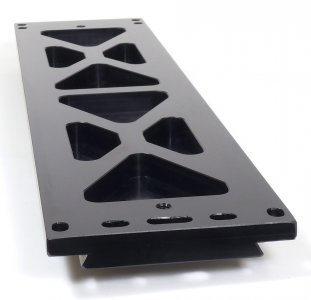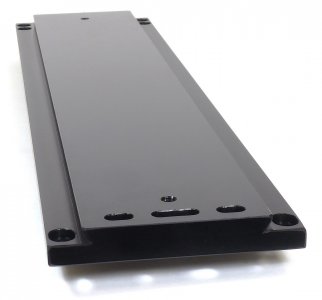Hello all. I will soon have a Grizzly G0704 mill. The plan is to eventually convert to CNC, but that wont be for some time.
I also have an Enco 9x24 Lathe.
I hope to make my own astronomy accessories. It is important to have strong, rigid and light weight parts. I am looking for any standard guidelines and/or recommendations for removing material from a part , such as an aluminum plate, without sacrificing strength or rigidity.
Below I have shown a commercial mounting plate. You can see that considerable material has been removed. Also notice the dovetail. This plate fits into a 'receiver' piece with a complimentary dovetail recess. This allows easy adjustments and locking once the scope is in the correct position.
These are very expensive and I am hoping to mill my own. I guess they are produced on a CNC mill - seems like a natural application for CNC. But could one be produced on a manual mill?


Any suggestions would be appreciated.
Regards, Frank )
)


I also have an Enco 9x24 Lathe.
I hope to make my own astronomy accessories. It is important to have strong, rigid and light weight parts. I am looking for any standard guidelines and/or recommendations for removing material from a part , such as an aluminum plate, without sacrificing strength or rigidity.
Below I have shown a commercial mounting plate. You can see that considerable material has been removed. Also notice the dovetail. This plate fits into a 'receiver' piece with a complimentary dovetail recess. This allows easy adjustments and locking once the scope is in the correct position.
These are very expensive and I am hoping to mill my own. I guess they are produced on a CNC mill - seems like a natural application for CNC. But could one be produced on a manual mill?


Any suggestions would be appreciated.
Regards, Frank



